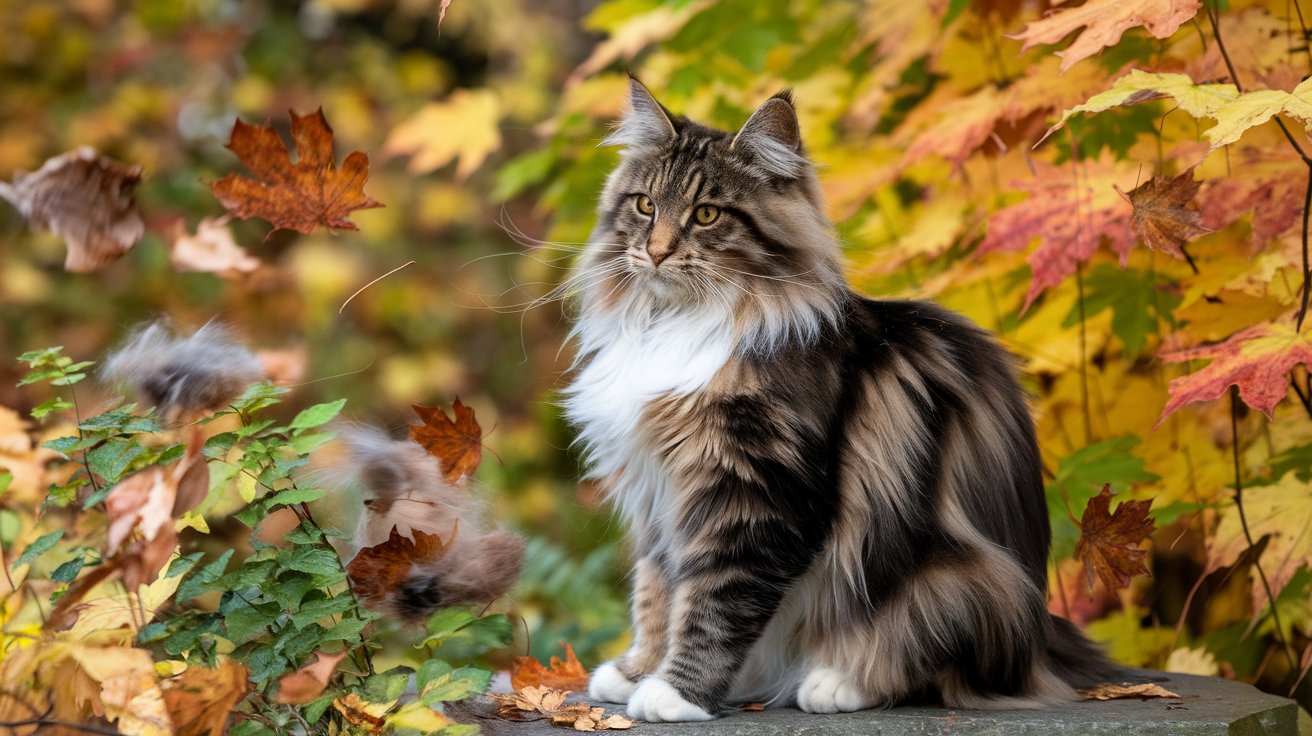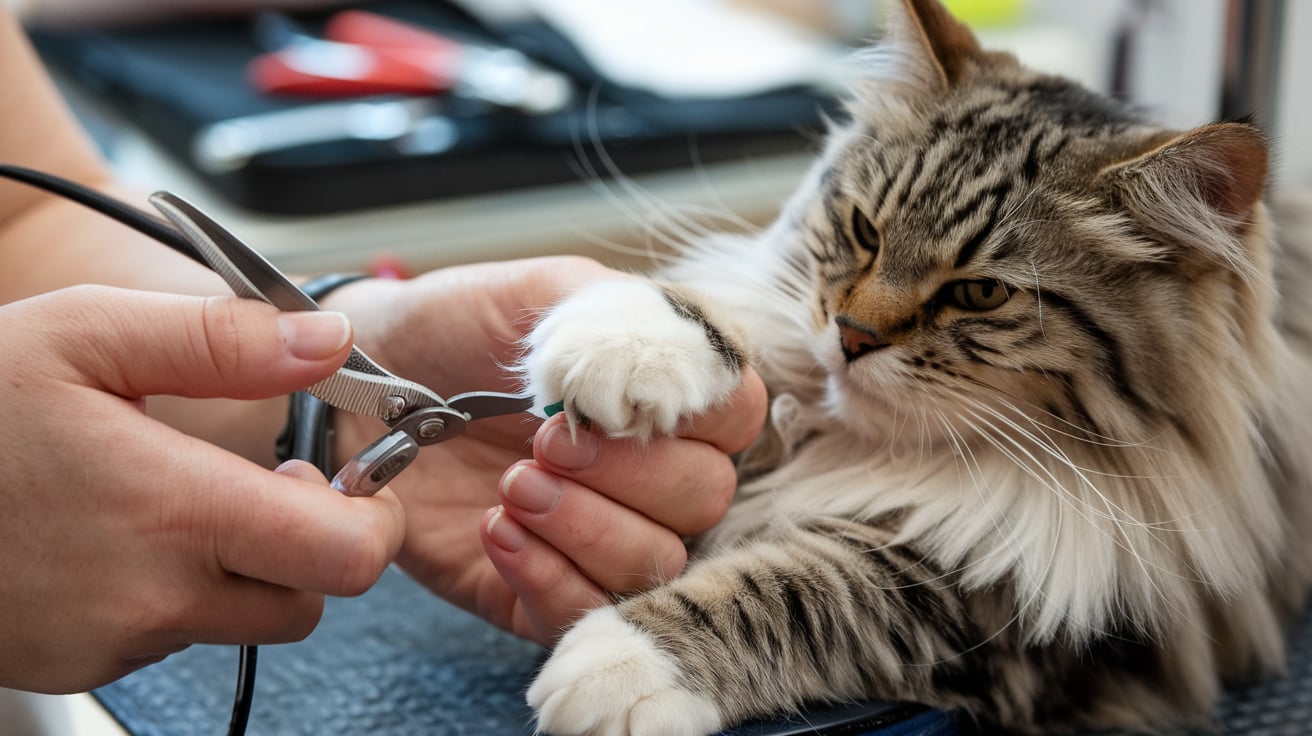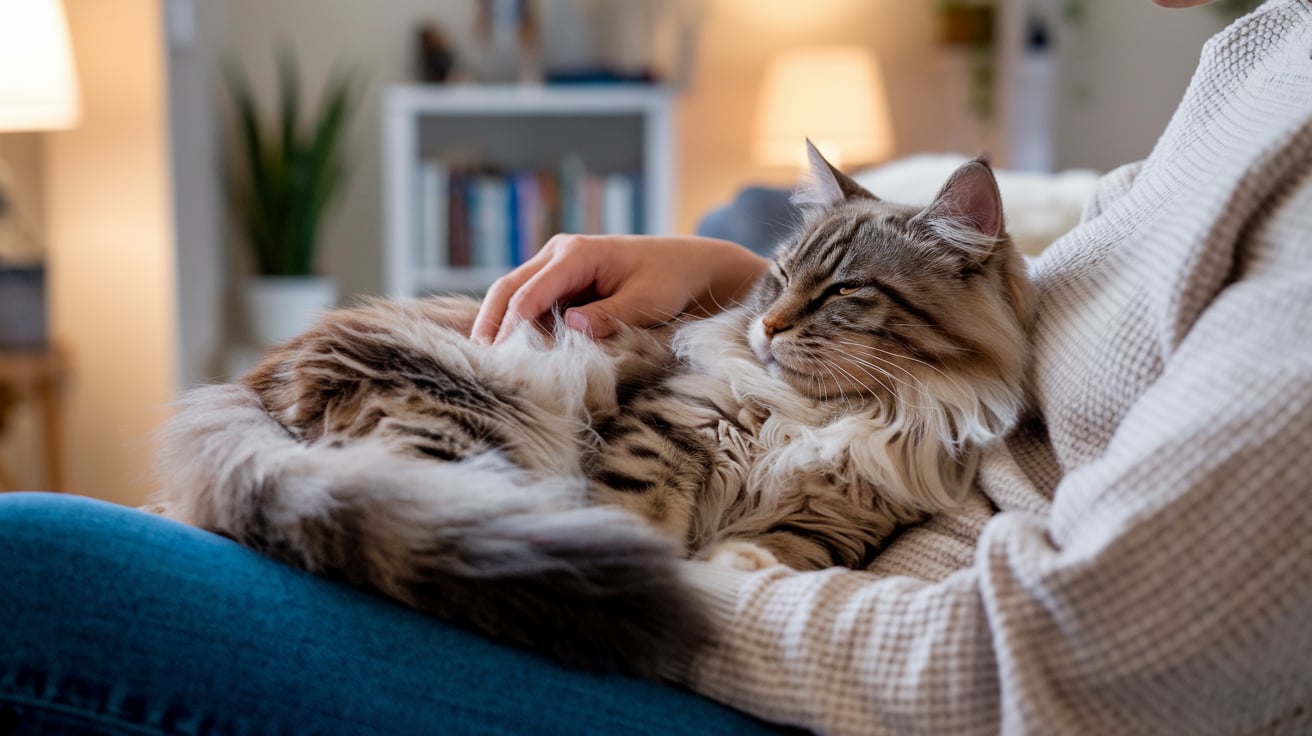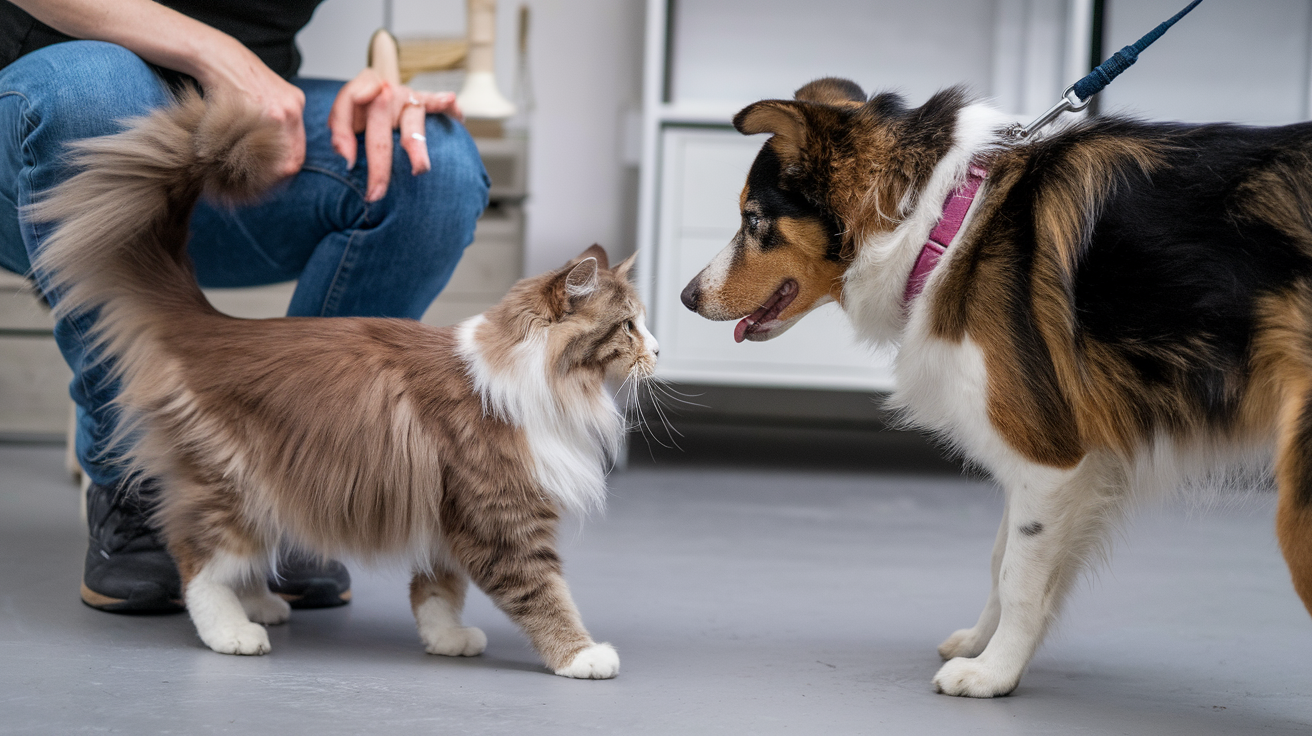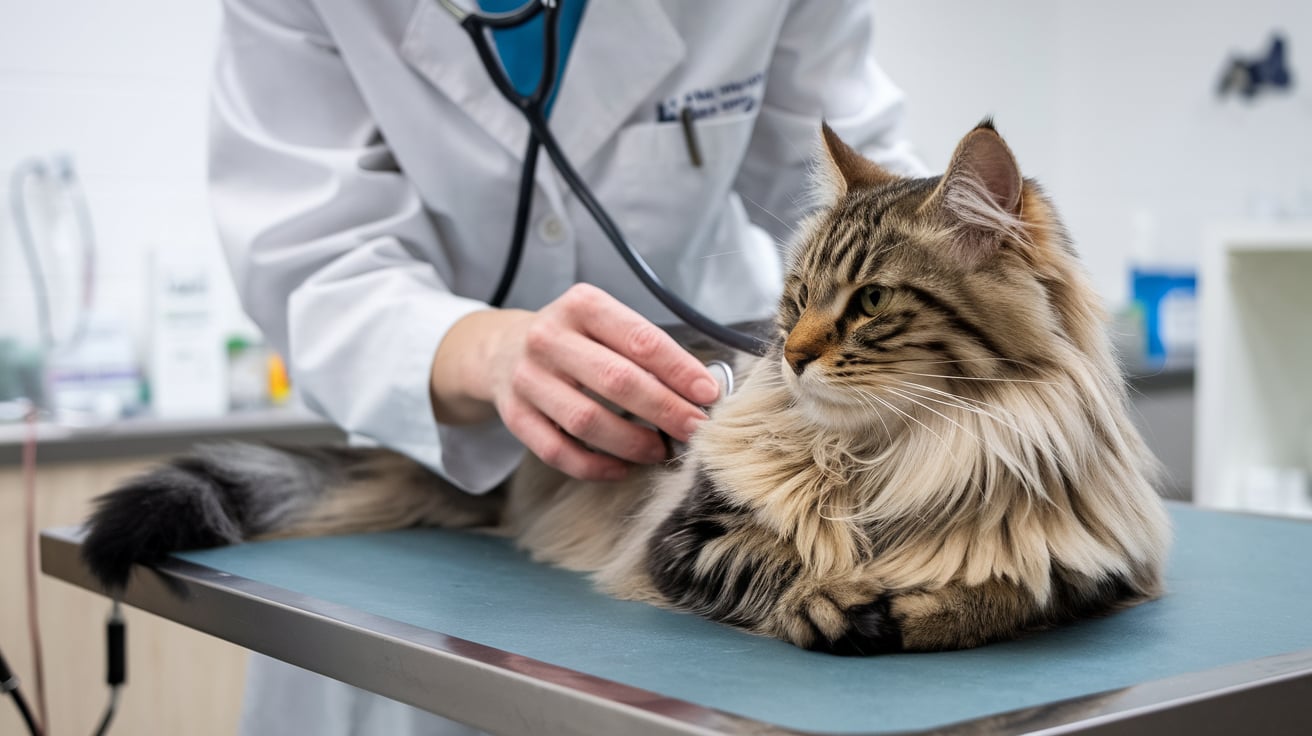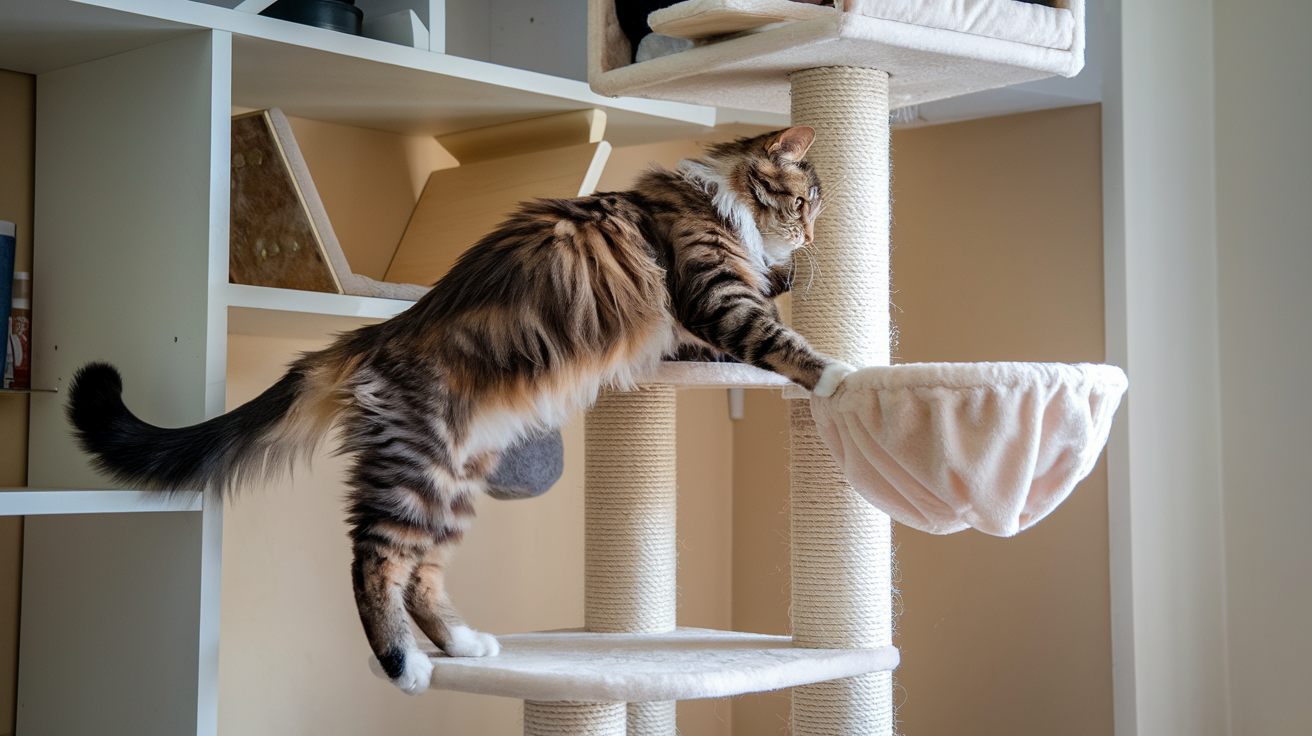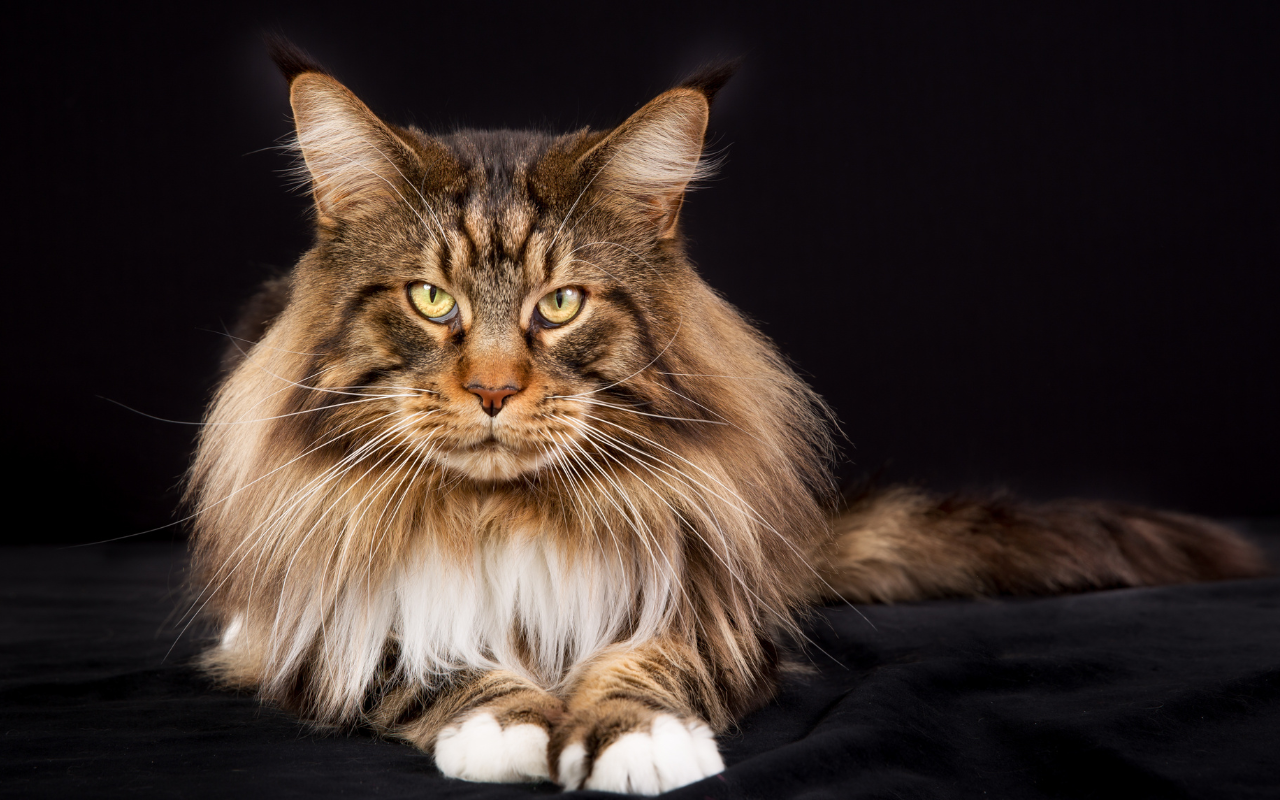The Complete Guide to Training Your Maine Coon Cat
Table of Contents
Training a Maine Coon cat is an incredibly rewarding experience for both you and your feline companion.
Maine Coons are extraordinary felines that combine intelligence, playfulness and an unusually sociable nature, making them arguably the most trainable of all cat breeds. As a team who have worked with many of these gentle giants over two decades, we can assure you that with the right approach, your Maine Coon can learn an impressive repertoire of behaviours – from basic commands to walking on a lead and even performing tricks that will amaze your friends.
This guide provides comprehensive training strategies specifically tailored to the unique personality of the Maine Coon breed.
Understanding the Maine Coon Temperament: The Foundation of Successful Training
Before diving into specific techniques, it’s crucial to appreciate what makes Maine Coons so uniquely trainable. They possess a rare combination of traits that set them apart from other cats.
The Maine Coon Personality
Maine Coons are renowned for their friendly demeanour and remarkable intelligence. They’re incredibly curious, deeply social, and genuinely enjoy interacting with their human families. Many owners describe their Maine Coons as “dog-like” due to their loyalty and trainability.
Maine Coons possess a calm and relaxed temperament compared to other breeds. This even-tempered nature makes them excellent candidates for training, as they’re less likely to become stressed or anxious during new experiences.
Learn more: Maine Coon Personality & Temperament in Depth
Intelligence That Sets Them Apart
Their problem-solving abilities and quick learning capacity mean they can master a wide variety of behaviours and tricks if approached with the proper methods. Their sharp minds mean they require mental stimulation to stay happy and healthy, making training sessions not just educational, but essential enrichment for these brilliant cats.
Key Traits That Affect Training:
- Highly Intelligent: They quickly grasp new commands and routines.
- Social and Affectionate: Training reinforces their bond with you.
- Independent Yet Playful: They enjoy challenges but may need motivation.

Creating the Optimal Training Environment
Successfully training your Maine Coon begins with establishing the right conditions and approach.
Choosing the Perfect Time to Begin Training
The ideal time to start training your Maine Coon is when they’re between 8-12 weeks old. At this age, their brains are highly receptive to new experiences and forming associations. Don’t despair if you’ve adopted an older Maine Coon as they can learn at any age, though it may require a bit more patience.
Consistency in your training schedule is absolutely crucial. Rather than random sessions whenever you feel like it, establish a regular training routine. This predictability helps your Maine Coon understand what’s expected and prevents confusion. At the same time, recognise that even the most trainable cats have limits to their attention spans.
Creating a Training-Friendly Space
Before beginning any training session, find a quiet environment with minimal distractions. Maine Coons are naturally curious, and any new sound or movement can easily divert their attention. .
Short and Sweet: Respecting Attention Spans
One critical mistake many new Maine Coon owners make is trying to conduct lengthy training sessions. Even with their levels of intelligence, these cats have relatively short attention spans. Keep your training intervals brief – ideally between 5-10 minutes.
One or two short sessions daily yield far better results than a single lengthy session. If your Maine Coon seems disinterested or distracted during training, it’s best to simply end the session and try again later.
Positive Reinforcement
Positive reinforcement is unquestionably the most effective training approach. These cats respond exceptionally well to rewards and praise while typically shutting down if faced with negative responses.
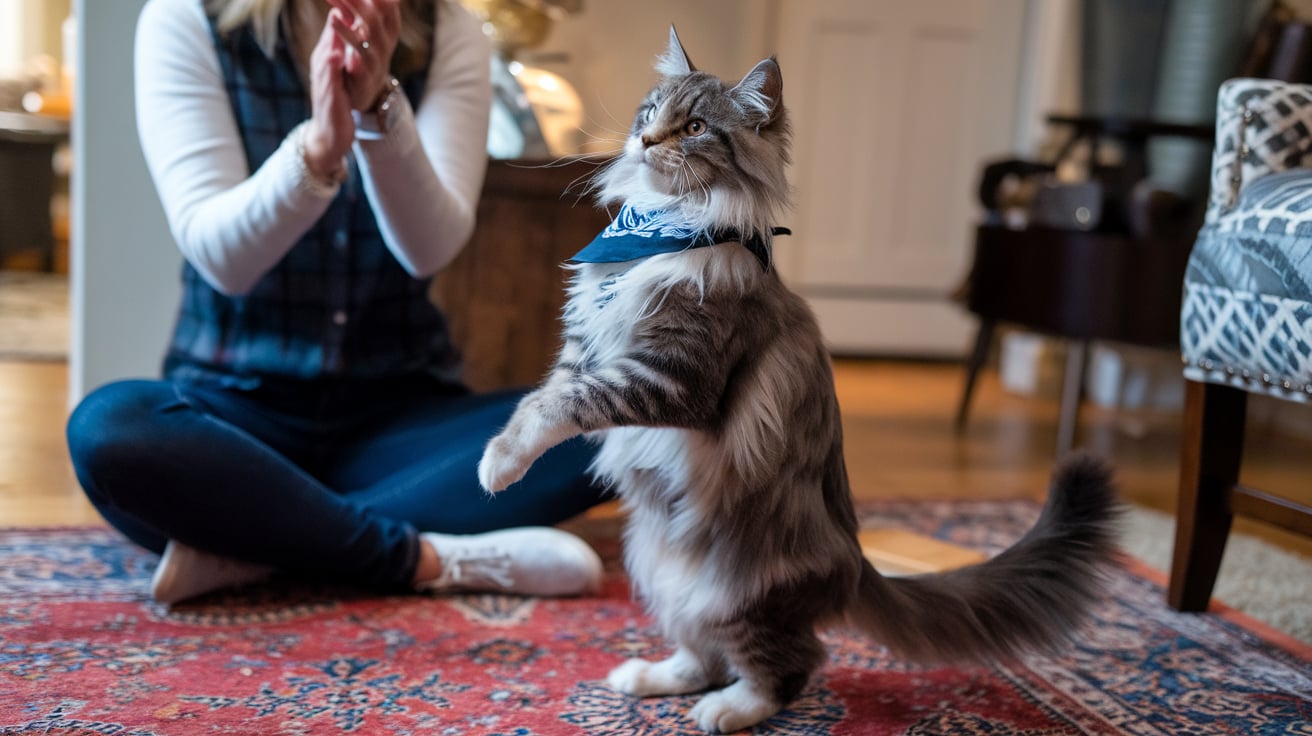
The Power of Treats and Rewards
Almost all Maine Coons are food-motivated to some degree, making treats an invaluable training tool. When your cat successfully performs a desired behaviour, immediately reward them with a small, healthy treat. This creates a clear association between the action and the positive outcome.
Remember to account for these treats in your cat’s daily caloric intake – they should constitute no more than 10% of their diet to prevent weight issues. For overly food-motivated Maine Coons, you might even use portions of their regular meals for training.
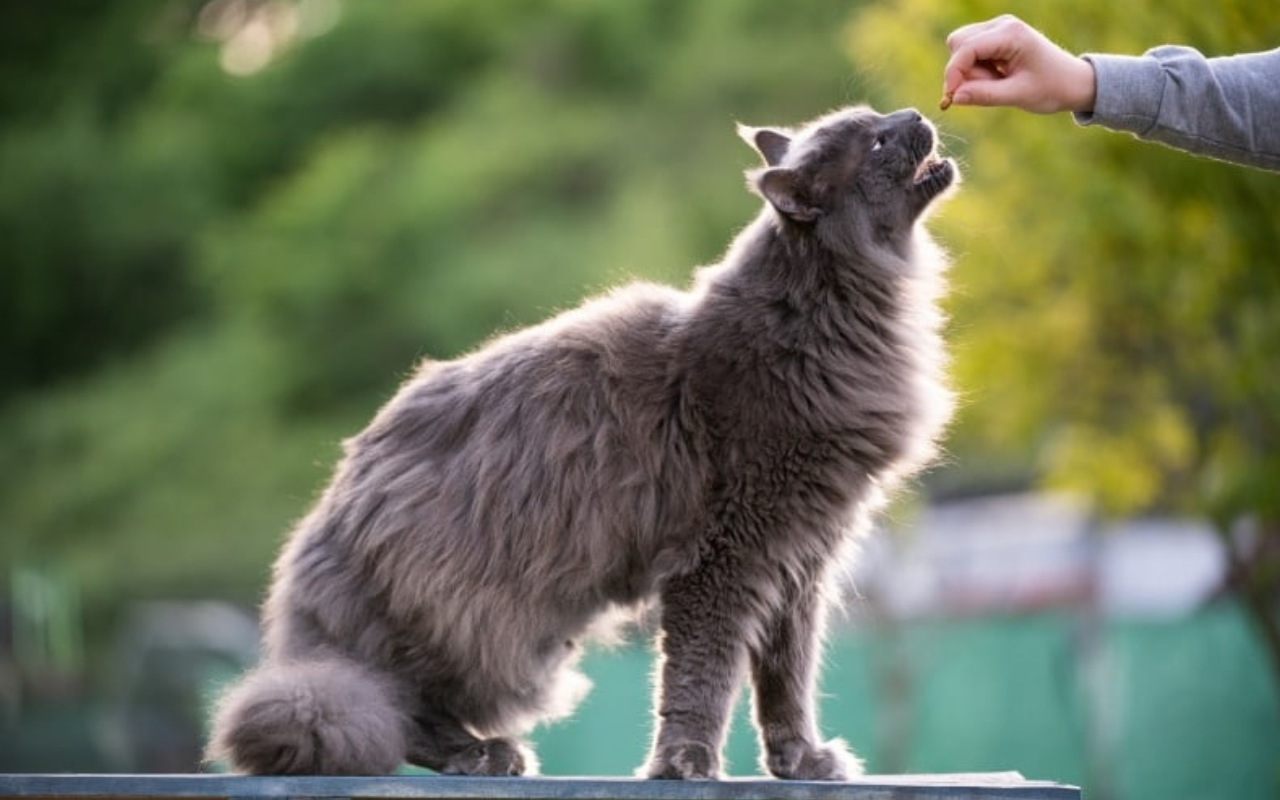
Alternative Motivators
While most Maine Coons respond well to food as rewards, some may be more motivated by play or affection. Pay attention to what your individual cat values most – perhaps it’s a favourite toy, a stroke, or enthusiastic verbal praise.
We’ve worked with Maine Coons who would perform complex behaviours simply for the reward of playing with a particular feather wand or receiving chin scratches. The key is identifying what your specific cat finds most rewarding and using that consistently in your training approach.
Clicker Training
Clicker training can be very effective with Maine Coons due to their ability to form associations quickly. The clicker creates a precise marker that tells your cat exactly when they’ve performed the desired behaviour correctly.
First “charge” the clicker by clicking and immediately giving your cat a treat. Do this several times until your cat associates the sound with a reward. You can then use the clicker at the exact moment your Maine Coon performs the target behaviour, following immediately with a treat. This precision helps them understand exactly which action earned the reward.
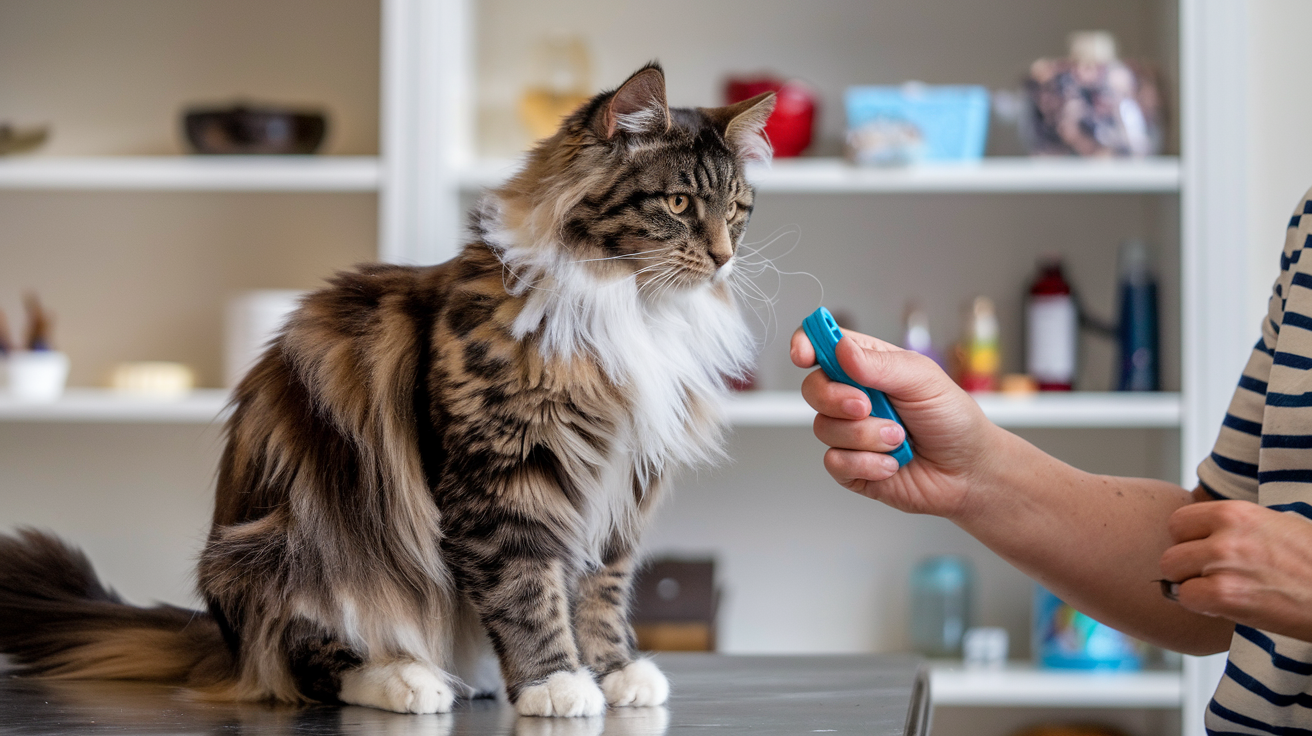
Basic Command Training for Maine Coons
Teaching “Sit” Command
The “sit” command is typically the easiest to begin with for Maine Coons. Here’s our step-by-step approach:
-
Hold a treat slightly above your cat’s head, moving it slowly backwards toward their tail.
-
As their head follows the treat, their bottom will naturally lower to the ground.
-
The moment they sit, say “sit” clearly, click (if using a clicker), and immediately reward with the treat.
-
Repeat this process several times daily until they begin to associate the verbal cue with the action.
-
Eventually, try using just the verbal cue without the treat lure, rewarding when they respond correctly.
Most Maine Coons master this command within a few days of consistent practice. Remember to keep sessions brief and always end on a positive note.
The “Come” Command
We recommend this approach:
-
Begin in a quiet room with minimal distractions.
-
When your cat is a short distance away, say their name followed by “come” in a cheerful, encouraging tone.
-
If necessary, pat your legs or use a treat to entice them toward you.
-
The moment they move toward you, offer enthusiastic praise.
-
When they reach you, immediately reward with a treat and affection.
-
Gradually increase the distance and practice in different rooms of your home.
Consistency is crucial here – use the same verbal cue every time and ensure the experience of coming to you is always positive.
Practical “Stay” Training
The “stay” command requires more impulse control and is typically more challenging, but Maine Coons can certainly master it:
-
Start with your cat in a sitting position.
-
Hold your palm facing them (like a “stop” gesture) and say “stay” clearly.
-
Initially, ask for just a second of staying before rewarding.
-
Gradually increase the duration, rewarding for progressively longer stays.
-
Once they understand the concept, begin adding distance by taking a step back while maintaining the stay command.
Patience is important with this command, as it requires significant self-control from your Maine Coon. Keep sessions very short at first and celebrate small improvements rather than expecting perfection.
Leash Training Your Maine Coon
Maine Coons are excellent cats for leash training. This allows them to safely explore the outdoors while remaining protected from the dangers faced by free-roaming cats.
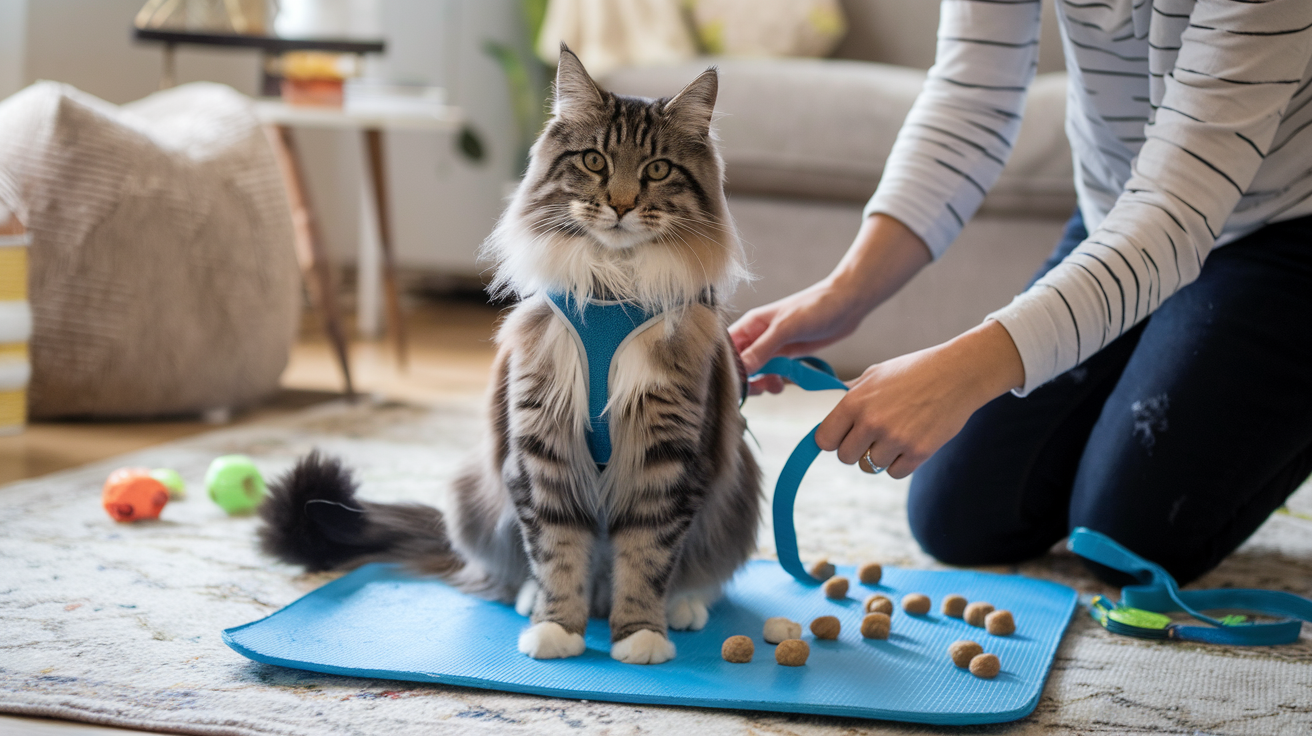
Selecting the Right Equipment
Successful leash training begins with proper equipment. Never use a collar for leash walking, as cats can easily slip out or potentially injure themselves. Instead:
-
Choose a H-style harness specifically designed for cats, ensuring it’s adjustable and made of lightweight, comfortable material.
-
The harness should fit snugly but allow you to slip two fingers between the harness and your cat’s body.
-
Select a lightweight lead approximately 1.2-1.8 metres long – we recommend against retractable leads for cats.
Proper fit is absolutely crucial – a too-loose harness creates an escape risk, while a too-tight one will cause discomfort and negative associations with the training process.
Our Six-Stage Approach to Leash Training
Based on years of experience, we’ve developed this effective six-stage approach to leash training Maine Coons:
-
Introduction to the Harness: Allow your Maine Coon to investigate the harness before attempting to put it on. Let them sniff and examine it thoroughly, perhaps placing treats on or near it to create positive associations.
-
Short Harness Sessions: Once your cat is comfortable with the harness’s presence, begin placing it on them for brief periods (10-15 minutes), gradually increasing to 1-2 hours daily. Many Maine Coons initially respond by freezing or acting as if the harness has paralysed them – this dramatic response is normal and typically passes with repeated exposure.
-
Harness Habituation: Continue with daily harness sessions for approximately one week without attaching the lead. Your goal is for your Maine Coon to behave normally while wearing the harness, moving and playing as they would without it.
-
Lead Introduction: After your cat is fully comfortable in the harness, attach the lead but don’t hold it. Allow them to drag it around under supervision, helping them get accustomed to the sensation of something following behind them.
-
Gentle Guidance: Begin holding the lead loosely, following your cat’s movements without attempting to direct them. This helps them adjust to the feeling of connection and slight pressure from the lead.
-
Indoor Practice: Before venturing outdoors, practice walking on the lead inside your home. Use treats to encourage forward movement and turns, gradually introducing gentle directional guidance.
Once your Maine Coon is completely comfortable with these six stages, start in a quiet, contained area like a garden or private courtyard.
Common Challenges and Solutions:
- Cat Refuses the Harness: Start with short sessions and gradually increase wear time.
- Fear of the Outdoors: Use a controlled environment like a garden before heading to open spaces.
- Pulling on the Leash: Stop walking when they pull, rewarding calm walking behaviour.
Advanced Training for Maine Coons: Beyond the Basics
Once your Maine Coon has mastered basic commands and possibly leash walking, you may want to explore more advanced training.
Teaching Tricks and Complex Behaviours
Maine Coons can learn many of the tricks typically associated with dogs, such as:
-
High Five: Hold a treat in a closed fist at your cat’s shoulder level. When they paw at your hand to get the treat, say “high five” and reward them. Gradually shape this into touching your open palm on command.
-
Spin/Turn Around: Use a treat to lure your cat in a complete circle while saying the command word. Reward completion, gradually reducing the lure until they respond to the verbal cue alone.
-
Jump Through Hoops: Begin with a hoop resting on the ground, encouraging your cat to walk through it for treats. Gradually raise the hoop as they become comfortable with the concept.
The key to teaching complex behaviours is breaking them down into smaller components and building gradually. Maine Coons thrive on this type of mental challenge when it’s presented as an engaging game.
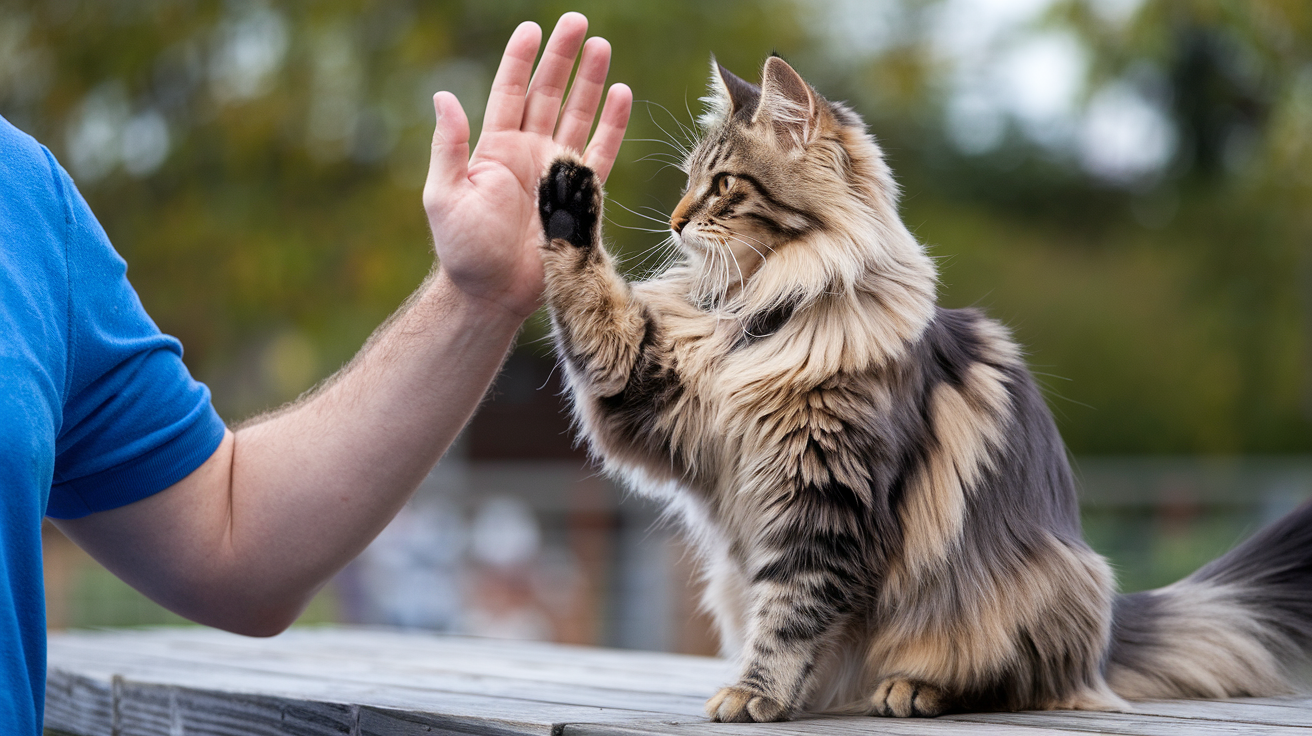
Target Training Techniques
Target training – teaching your cat to touch a specific object with their nose or paw. It’s effective with Maine Coons due to their natural curiosity:
-
Present a small target (like the end of a chopstick or a small stick with a ball on the end).
-
When your cat naturally investigates by sniffing or touching it, immediately click and treat.
-
Add a verbal cue like “touch” and repeat until they reliably touch the target on command.
-
Once mastered, you can use the target to guide your cat through more complex behaviours or into specific positions.
We’ve found this technique useful for everything from guiding a Maine Coon into a carrier to teaching them to navigate obstacle courses.
Common Maine Coon Training Challenges
Even with their exceptional trainability, Maine Coons can present certain challenges during the training process. Here are solutions to the most common issues we’ve encountered:
Maintaining Interest and Motivation
If your Maine Coon seems to lose interest in training:
-
Ensure sessions remain brief and end before boredom sets in
-
Vary the rewards used, alternating between different treats and forms of praise
-
Introduce new tricks or challenges to keep their brilliant minds engaged
-
Schedule training before mealtimes when food motivation is highest
Injecting playfulness into training sessions helps maintain a Maine Coon’s enthusiasm. These cats have a natural love of games, so framing training as play rather than work often yields better results.
Addressing Fear or Reluctance
Some Maine Coons may show hesitation with some training, particularly leash walking or interacting with new objects:
-
Never force a fearful cat to participate – this creates negative associations
-
Break challenging tasks into smaller, less intimidating steps
-
Use higher-value rewards for behaviours that trigger uncertainty
-
Provide praise and reassurance throughout the process
Patience is absolutely essential when working through fear responses. We’ve seen Maine Coons transform from extremely reluctant to enthusiastically engaged once they build confidence through gentle, progressive exposure.
Consistency Across Household Members
-
Ensure everyone uses identical verbal cues and hand signals
-
Establish clear guidelines for when and how treats are given
-
Consider having one person handle initial training before involving others
-
Hold regular “training updates” to keep everyone aligned on methods and progress
Creating a simple written guide of commands and techniques that all household members can reference helps maintain the consistency that Maine Coons need for successful training.
The Rewards of Training Your Maine Coon
Training your Maine Coon offers benefits that extend far beyond the practical aspects of having a well-behaved companion. Through consistent, positive training, you’ll build a profound bond with your cat that enriches both your lives immeasurably.
The mental stimulation provided by regular training sessions helps prevent behavioural issues that can arise from boredom. Each successful interaction builds your Maine Coon’s confidence and trust.
Remember that training is a journey rather than a destination. Even after your Maine Coon has mastered specific commands or behaviours, continuing to practice and introduce new challenges keeps their minds engaged. The time you invest in training will be returned many times over in the form of a deeply rewarding relationship with one of the most extraordinary cat breeds in the world.
Whether you’re teaching basic commands, adventuring together on a lead, the training process itself is an opportunity to better understand and appreciate the unique personality of your magnificent Maine Coon companion.

